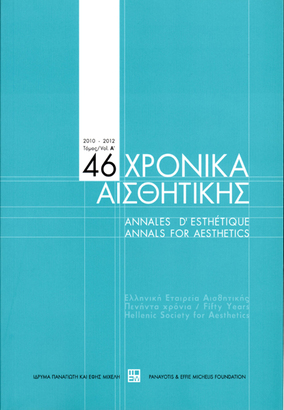Η σημασία του υποκειμένου στη μοντέρνα τέχνη : Theodor Adorno - Peter Bürger
Part of : Χρονικά αισθητικής : ετήσιον δελτίον της Ελληνικής Εταιρείας Αισθητικής ; Vol.46, No.Α, 2010, pages 231-249
Issue:
Pages:
231-249
Parallel Title:
The significance of the subject in modern art : Theodor Adorno - Peter Bürger
Section Title:
Αισθητική - Φιλοσοφία της Τέχνης - Ιστορία της Τέχνης Aesthetics/Philosophy of Art - History of Art
Author:
Abstract:
The aim of the present study is to seek the dialectic relation between subject and object in the context of the 20th century modern art. We will try to accomplish this based on the basic theories of two philosophers, Theodor Adorno and Peter Bürger. The role of the subject in modern art is of great interest. This role is formulated by Adorno, particularly within the narrow framework of avant-garde, while he strongly defends modern art, which evolves historically within a particular ideological and political climate that characterizes the first decades of the 20th century. As it is well known, Adorno wrote Aesthetic Theory in a period of transition as far as the ontological order of art in the 60’s is concerned. During this tough period, the conflict and confrontation between modern art and its avant-garde contestations have reached a peak. We must also underline the fact that the relation between art and society as well as the acceptance of the existence of the subject - as it appears actively within the different forms of social and aesthetical activities - are essential in Adorno’s work.However, our fundamental question will be oriented towards a period which starts with the 70’s and which Burger named Post-Avant-garde. It is a period when avant-garde trends and modern forms of art - especially the realistic ones - coexist. Bürger takes into consideration the fact that Aesthetic Theory is historical. However, at the same time, he insists on maintaining the critical dimension of art. He seeks and then interprets differently the new trends of subjectivity in modern art, particularly in his work Theory of the avant-garde. He detects Adorno’s weakness to draw conclusions from the internal limits of an artistic material and especially his point of view concerning artistic realism.
Subject:
Keywords:
μοντέρνα τέχνη
Notes:
Περιέχει εικόνες




